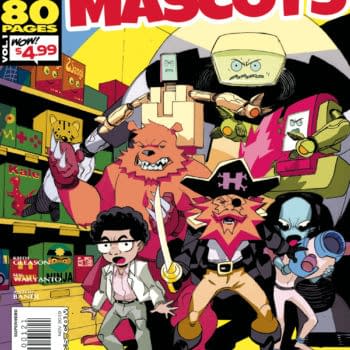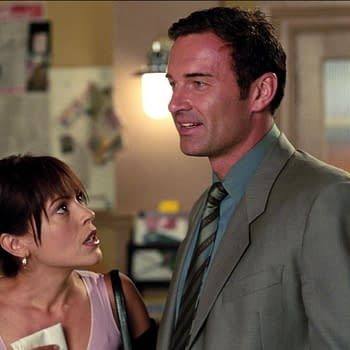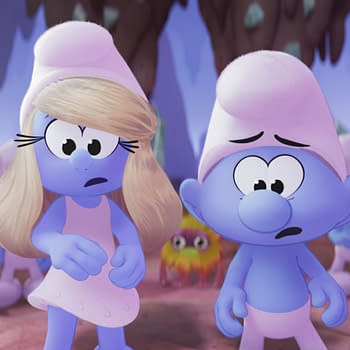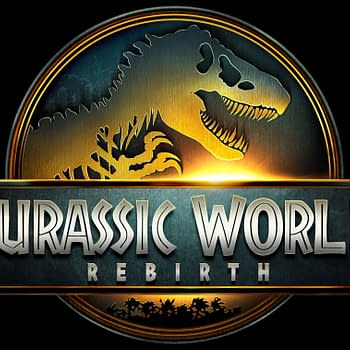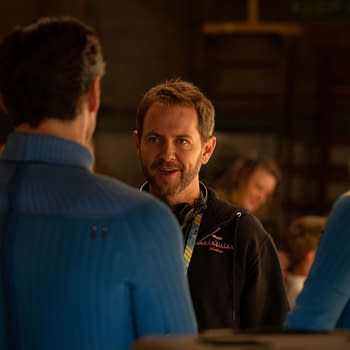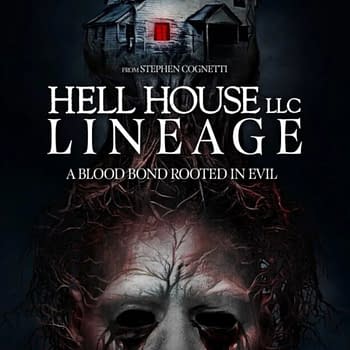Posted in: Movies | Tagged: ben mortimer, interview, iwan rheon, luke treadaway, rise, rowan athale
How To Plan A Heist Movie – With Rowan Athale, Director Of The Rise

The Rise, which hits the UK on DVD and Blu-Ray today, is one of the best heist movies of the last decade. Sharp, witty and clever, it's also far more emotionally engaging than the average low-budget Brit-crime-flick. Director Rowan Athale, who has just been named a 'Breakthrough Brit' by BAFTA, recently sat down with me to discuss how to plan a perfect heist movie.
Presentation is the key
I think it's the same with telling any story, like telling a joke, the punchline isn't what's funny about a joke, it's the person who's telling it, and the manner in which he does it. So the heist within The Rise is not overly complicated, but the way it's presented is in that show don't tell storytelling, where you just chose your moments to give up information to the audience. You chose when the right time is, and you time it right so that the reveals happen in the right way. It's all about the presentation rather than the fundamental nature of the heist is.
Avoid making it too easy
Literally every stage you have to think about what the character has to do, but it can't just be about what the character has to do in a specific part of the job, you've then got to add the extra peril to it. So it can be as simple as, he's got three seconds to re-wire something, then there's a flash of lightning, and the shock of it knocks the pliers out of his hands. You've got to add the extra peril, the extra pressure to each moment to make a difficult situation harder each step.
Tying the heist into the film's emotional arc
That's actually the trickiest balance, and I think in a way it comes down to the tone that you're looking for. With this film, as opposed to it just being a heist film which is all about the plan, I wanted it to be about why they enacted this plan, and it had to be about the human relationships between them all. It's actually, that's the trickiest balance. You spend too much time on character, and you can lose sight of the fact that you're making a genre picture. You spend too much time on the heist itself and you'd better be in Vegas, with 200 million in the budget, because if all you've got is the action, then you'd best make sure it's the most spectacular action.
So with this, I really thought we had to make the audience care about the characters, to then care about what they were doing. To be honest with you that just comes in in redrafts. You start with a plan and then you write your first draft, then you just keep chiselling away at it. But it is the hardest thing to get right.
Getting everything down on paper
This was a spec script, so something that existed in my mind that nobody was waiting to receive, and so I planned it whole on the way to work. It was something that would just be turning over and turning over in my mind. Then when it actually came to laying out the heist, when it came to laying out what the plan is, I did it in a marathon writing session, as if I was watching the film, if that makes sense. Every single moment wasn't planned out, I just knew what they were going to be. There was a little bit of moving around in the redraft, but it had been something I'd been living with for a long time and I just got it out.
It was probably about 15 hours over a 19-20 hour period. I didn't write it with the finesse of the finished script, so a lot of it became what you might call the index cards, the bullet points. When you're writing a script and you want people to read it, and you want people to enjoy it, you actually do finesse the prose, you do finesse the writing style, because you want what the film's going to be, tonally, to come out in the writing, and it not just to be 'direction', 'dialogue', 'direction', '
That's the best thing about writing. Writing's not just when you're sat down at the keyboard, writing's when you're on the way to a meeting, it's when you're at the gym, it's when you're shopping, it's whenever an idea comes to you.
Translating it from page to screen
Obviously I wrote it, and going back to the style of writing in there, I wrote it in a way that I was going to represent it when I directed it, so I was directing it in my mind as much as possible as I was writing the script, which is probably the best way of thinking about it, because I wear both hats. When it comes to directing the film, it takes a long time to get the money together, and to actually get yourself there into prep, and there's a long time spent doing that, and you're living with that film in your mind. But then when it became this feasible thing that we were going to make, it became this material production that was going to go ahead, everything that you think you know, throw away, because you've been living with these locations in your mind that don't entirely exist. They're a collection of places you know.
[For instance] the club that they rob: the façade is one place I know, the inside is another place I know, the roof is another place, and none of them make physical sense, because you're making them up completely in your mind. Unless you're doing animation, that's never going to work; you're going to have to find locations, and nothing is ever going to be what you had in mind, what you thought it was going to be. So you have to throw away what you think you know, and relearn it. You have to go with a completely open mind to any location, to any production designer's sketch or layout for the set, go completely with an open mind. Instead of thinking, 'it has to be exactly what I thought it was going to be', see if you can make what actually exists, better. Work within the space that you've got.
When you've got a character in your mind he's going to be delivering the emotional beats, he's going to be acting in a certain way. Then you work with an actor, and you're working with them because they're talented people, and then you see what they're doing with something, and again you have to forget everything you think you know, and work with what you've got. In that way, it doesn't just make making a film easier for you, it makes it better, because you're not so married to this version of something that doesn't exist.
How the movie changed from script to screen
There's really no structural changes from the script to the screen. The story beats, the emotional beats, the things that I wanted to get out of it, we achieved everything that I set out to do, and what we set out to do. Which is great, because we had a really small budget. The producers really pulled it out of the bag, we didn't want for anything. If it was needed for the story, they found a way to provide it.
From a storytelling sense, in the emotional beats, it's what I wanted it to be. Aesthetically, it's stylistic in terms of the lighting, in terms of the tone, which is what I wanted it to be, but just the physicality of the scenes, the camera placement, the location, it's completely different, because there's not one location we shot at which I ever had in mind when I was writing it.
Thanks again to Rowan for taking the time to speak to us. The Rise is out today and comes fully recommended. In the US, look instead for Wasteland.


